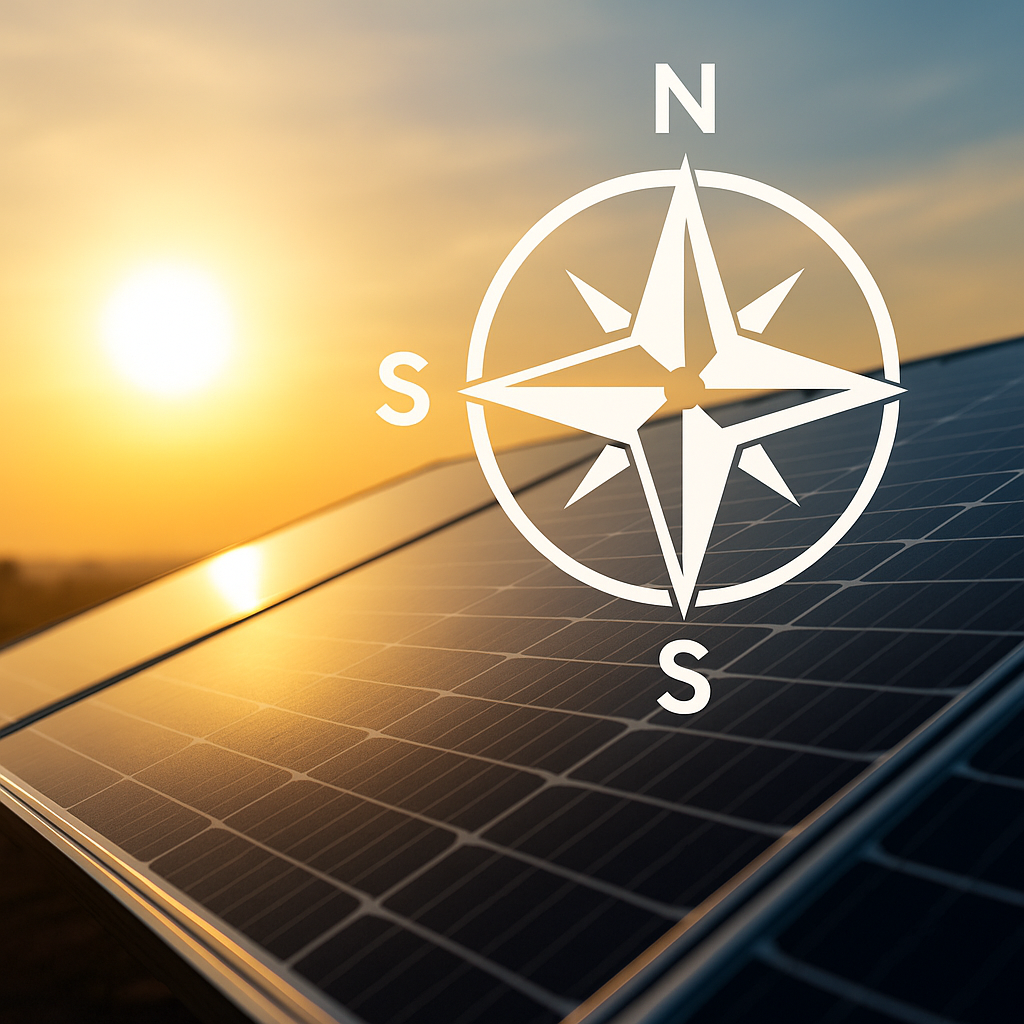When it comes to getting the most out of your solar panels, direction matters. The angle and orientation of your solar system can have a major impact on how much energy it produces — and ultimately, how much you save. In this blog, we’ll break down the ideal direction for solar panels and what homeowners should consider based on location and roof design.

Why panel direction matters
Solar panels generate electricity from sunlight, so the more direct sun they receive, the better. The direction and tilt of your panels affect how much sun they’re exposed to throughout the day. Maximizing this exposure ensures you’re getting the most return on your solar investment.
The best direction for solar panels
- South-facing: In the U.S., panels facing true south receive the most consistent sunlight throughout the day. This is generally considered the optimal direction for energy production.
- West-facing: If south-facing isn’t an option, west-facing panels can still perform well, especially during peak demand hours in the late afternoon.
- East-facing: East-facing panels get good sunlight in the morning but tend to underperform in the afternoon.
- North-facing: This direction is the least efficient for solar production in the northern hemisphere and is generally avoided unless paired with additional panels or batteries.
What if your roof doesn't face south?
Don’t worry — solar can still work for you. A professional installer can design a custom system that takes your roof orientation into account. Here’s how they might adjust:
- Use a tilt mount to angle panels toward the sun
- Split the system between multiple roof faces
- Install on a garage, carport, or ground mount
Consider your energy goals
The best direction for your panels also depends on what you want to prioritize:
- Maximum energy output: South-facing orientation is best
- Offsetting peak rates: West-facing panels can help reduce your evening utility costs
- Year-round performance: A mix of east- and west-facing panels may balance production
Other factors that affect solar performance
- Shading: Trees, chimneys, or neighboring buildings can reduce sunlight exposure
- Roof pitch: The angle of your roof plays a role in capturing optimal sun
- Geography: Your region’s latitude and climate influence system design
How we design for your home
Our team uses high-resolution satellite imagery and site visits to determine the best layout and direction for your solar system. Even if your roof isn’t perfectly positioned, we’ll work with what you’ve got to create a system that performs.



































